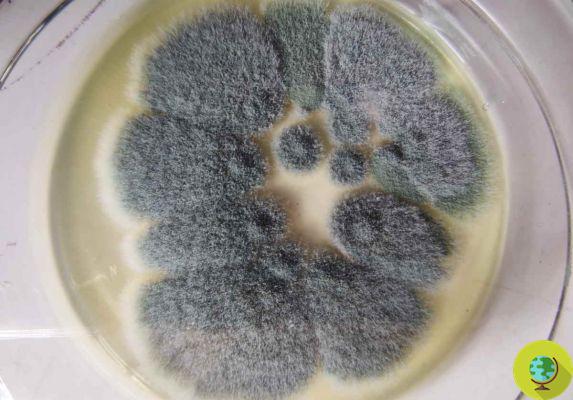
Antibiotic resistance is a plague that affects more and more people around the world. British researchers analyzed the incidence of Aspergillus fumigatus mold, responsible for invasive aspergillosis
Don't store avocado like this: it's dangerousFungal infections affect more than a billion people worldwide, with a mortality rate that matches that of malaria or tuberculosis - a real epidemic that is not yet talked about enough.
Among the most harmful molds for human health is certainly the Aspergillus fumigatus, an environmental mold widespread in all regions of the world, which can cause the onset of numerous lung diseases - such as, for example, theinvasive aspergillosis (AI), a disease that severely affects the respiratory tract causing asthma, pneumonia, sinusitis, and which can progress to hemorrhagic necrosis or heart attack.
AI affects 10-20 million people worldwide and, if for those who do not suffer from particular diseases the course occurs without consequences, in fragile patients (for example, those who have undergone an organ or stem cell transplant) and already tried by other pathologies such as neutropenia, cystic fibrosis and, ultimately, Covid-19 can worsen to death.
(Read also: Antibiotic resistance: it is already a leading cause of death in the world, shock data)
Unfortunately, recent studies have shown that this particular mold is capable of resist azole antifungal drugs, once effective in eradicating Aspergillus fumigatus, both in clinical treatment and in environmental disinfestation. Drug resistance to azole has serious clinical implications: in AI patients, for example, it causes a 25% increase in mortality.
A team of researchers from Imperial College London is watching the situation closely. The researchers isolated 218 Aspergillus fumigatus specimens from England, Wales, Scotland and Ireland: seven out of ten samples (153 samples) came from sick people, while the remainder (65) came from the environment - soil, compost, plants, air.
Of all the samples analyzed, 106 proved resistant to at least one of the azole drugs usually used in medical treatment: in particular, 48% of the samples proved resistant to itraconazole, 29% to voriconazole and 21% to posaconazole. ; in addition, more than 10% of the samples demonstrated resistance to two or more azole drugs.
But why has mold become immune to the action of drugs?
The answer is very simple: a widespread use of azole fungicides for agricultural use and exposure to them by the population made the fungus resistant to the drug.
Understanding environmental hotspots and the genetic basis of the evolution of resistance to fungal drugs requires urgent attention, because resistance is compromising our ability to prevent and treat this disease. Matthew Fisher, author of the study. - The prevalence of drug resistant aspergillosis has grown from negligible levels before 1999 to 3-40% of current cases across Europe.
At the same time, more and more people may be susceptible to Aspergillus fumigatus infection due to the growing number of people receiving stem cell or solid organ transplants, who are on immunosuppressive therapy, or who have lung disease or severe viral respiratory infections.
Scientists had already sounded the alarm (unheard)
The health emergency linked to the antibiotic resistance of this particular mold this is not new, unfortunately, and several studies have already demonstrated the dangers to ecosystems and animals associated with exposure to azole fungicidal drugs.
In particular, a study conducted by the European Union has shown how exposure to the fungicide in marine ecosystems is responsible for endocrine alterations in fish and other aquatic organisms: these, in fact, can accumulate azoles inside the organism and transform them - with dramatic consequences such as reduction or alteration of growth and even death.
The significant environmental damage caused by exposure to fungicides increases when we consider that many of the contaminated rivers and streams provide drinking water to human communities. In short, the alarm raised by scientists is very clear: both aquatic ecosystems and humans (through the consumption of drinking water) are concretely at risk of contamination by antifungal azoles.
Yet these fungicides are not yet prohibited by law, and their use continues in agriculture all over the world, with serious consequences that we are already experiencing first hand.
Follow your Telegram | Instagram | Facebook | TikTok | Youtube
Sources: Nature Microbiology / Cordis Europa
We also recommend:
- Antibiotic resistance: is it really dangerous to have your dog lick your face?
- Mold exposure: symptoms you shouldn't underestimate
- Your makeup brushes contain more bacteria and mold than the toilet, the disgusting microscope test


























